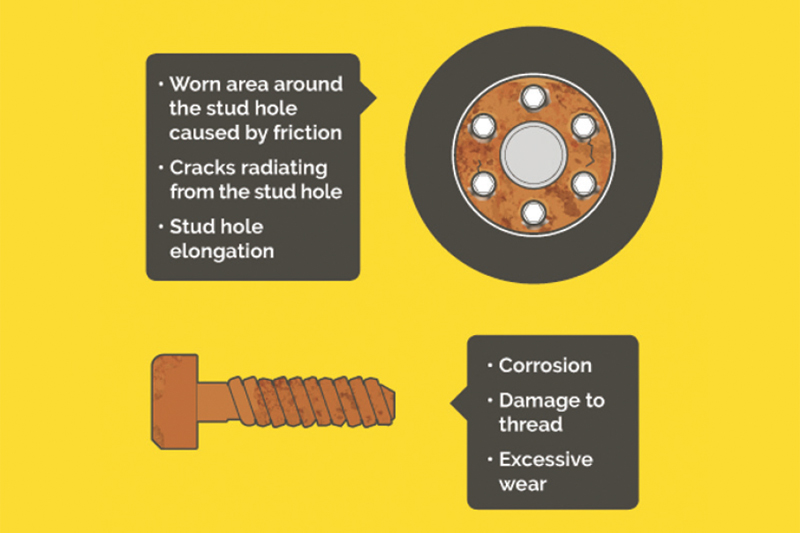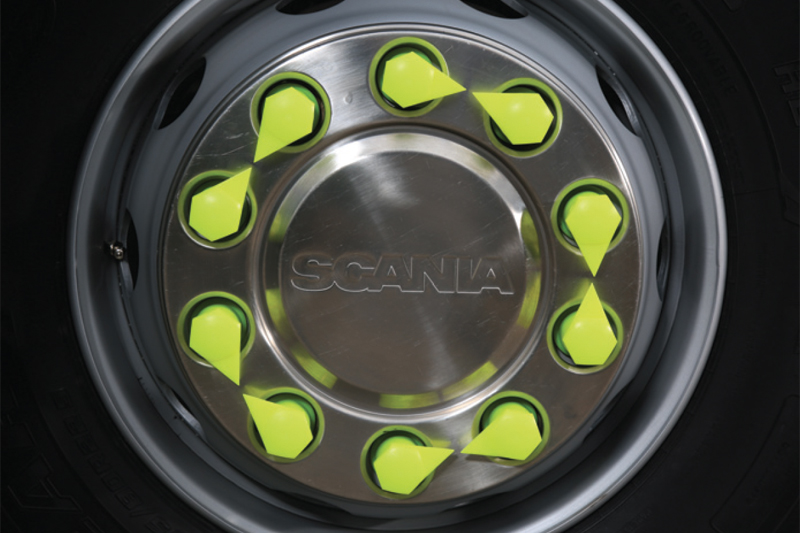
Wheel safety specialist Checkpoint discusses the tell-tale signs of wheel defects and the resulting safety responsibilities for both drivers and fleet operators.
Did you know that each year, on average, there are 11,000 road incidents involving wheel defects? The results of which include 400 wheel detachments. With only 68% of drivers operating daily safety checks and 5% never checking their wheels, the dangers surrounding wheel safety are very real. The common causes of wheel defects include:
Excess vibrations – Poor road conditions or overloaded vehicles can lead to movement between the mating faces, this can gradually work a wheel nut loose.
Worn/damaged studs – Studs can be damaged over time and need to be inspected and replaced. Damage to studs can lead to stresses, resulting in the shearing of the stud.
Stud hole elongation – This is caused by the poor fitment of the wheel. This can be enhanced by excessive acceleration, braking, and cornering forces.
Incorrect torqueing – Under- or over-torqueing and the incorrect torqueing sequence can result in a loss of clamping force. Over-torqueing can result in stretched threads and potentially the shearing of studs.
Inaccurately-calibrated torque wrench – Torque wrenches need regular calibration to avoid false values of torque being applied to a nut.

Incorrect use of air impact tools – Torque is not measurable using these tools and is often excessive, causing damage to the studs, nuts, and washers.
Inconsistent safety inspections – A lack of regular visual checks for wheel damage or loose wheel nuts can lead to a vehicle being operated with unknown defects. This can present a serious safety risk and lead to further damage of the vehicle components.
Designed to promote wheel safety, the Best Practice Guide helps readers identify the telltale signs of poor wheel safety, wheel loss and more. Encouraging roadworthiness, instructions are also given on how to apply products from the Checkpoint Safety range to maximise wheel safety.
The dangers of ignoring these signs are very real, and can often lead to fatal consequences. In fact, it is estimated that the 400 wheel detachments happening each year result in 134 causing damage, 27 leading to injury, and seven resulting in fatalities.

Once a wheel has been lost, not only does the dramatic loss of vehicle control pose a serious risk to the driver and those around them, but the detached wheel can also accelerate up to around 150km/h and collide with other vehicles or road users at an equivalent force of 10 tonnes.
The importance of daily checks
It is a legal requirement for drivers to ensure their vehicles are free from visible defects. For those that see frequent use, this often means performing daily checks to ensure the integrity of the vehicle. Despite all this, it was found that 32% of drivers admit to not checking the wheel nuts of their vehicle, risking the possibility of wheel loss and more.
Sharing this responsibility, it is also the duty of the fleet operator to guarantee the roadworthiness of every vehicle. This highlights the importance of having a robust procedure in place to prevent wheel loss. A very real financial risk for businesses exists too, whilst Traffic Officers and the DVSA have the power to carry out roadside checks and issue fixed penalty notices.
The Checkpoint Safety range encompasses a range of solutions, all with the common theme of visual safety and preventative maintenance, providing businesses with increased safety awareness, reduced maintenance costs, decreased vehicle and equipment downtime, simple and efficient tools to install, and highly visible heat detection and defects.








